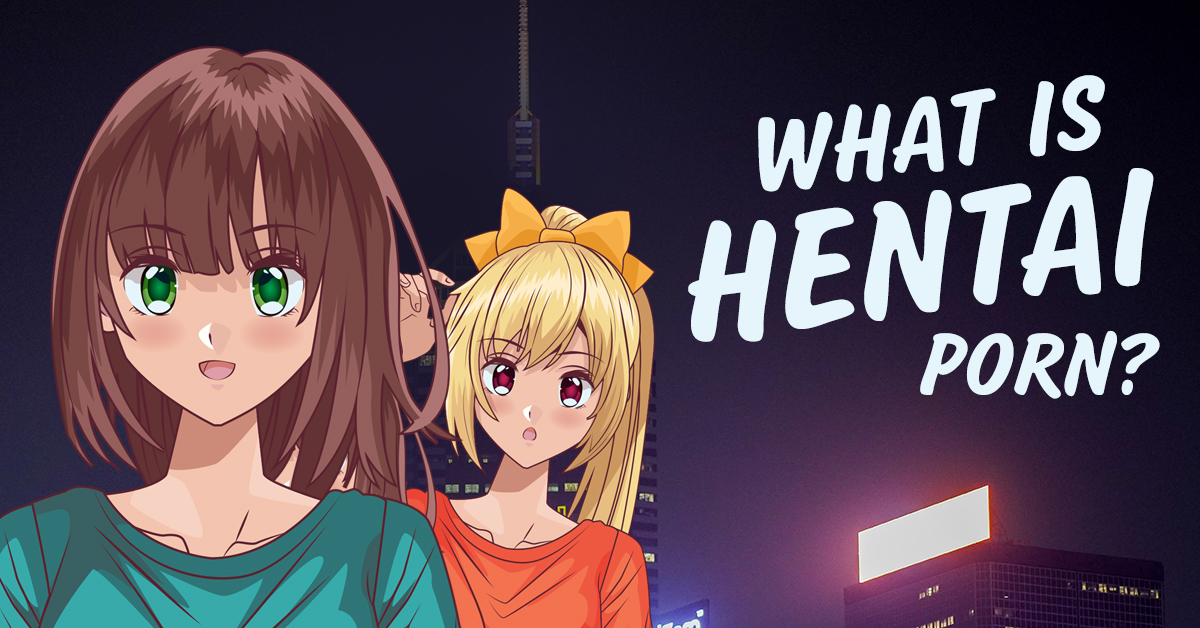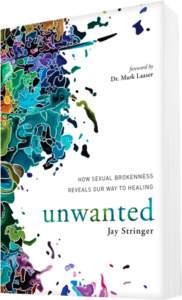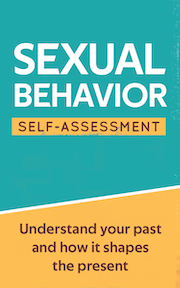By Jay Stringer
In 2019, the second most searched for term in pornography was hentai. That’s right, one of the most popular types of pornography may be a genre you haven’t even heard of.
What is Hentai?
Hentai is taken from the Japanese phrase hentai seiyoku, meaning a perverse sexual desire.* Hentai pornography falls under the umbrella of the growing popularity of cartoon porn. The closest reference point you might have for this genre of porn is anime, short for the Japanese word animēshon.
When your child views hentai porn, they are watching pornography that features characters who have exaggerated sexual features. Some women are made to look like children and many children, including toddlers and infants, are designed to look like willing sex objects with developed female body parts. Almost all the female characters are light-skinned, some have large breasts and in the case of lolicon (child hentai), no breasts.
The production of hentai or hentai magna intentionally blurs the lines between adults and children. The characters seem to be a confluence of an adults, teens, and children. As scholar Gail Dines says, hentai childifies women and adultifies children. Central to the arousal and demand for hentai is the theme of “sexy innocence”, a term I’ll come back to later in the article.
Animations of incest, abuse, and torture
Hentai pornographers use computer graphics to create scenes portraying cartoon women and children that are regularly raped by monsters, giant insects, animals, and darker skinned males. In other hentai porn, there will be scenes involving children. For example, *trigger warning* a description of one child might be “no tits, wet lips”.
According to researcher Estella Lopez, one hentai game even allows a player to slowly enter a little girls room. As he advances, the goal is to molest the child while she is sleeping. In another game, Lopez notes that the entire point of one game is to remove the clothes from an innocent girl in the proper order. If the player does so in the incorrectly, he has to start over again. As the clothes are taken off, the child’s cheeks become rosier, signifying arousal. Other scenes are full of children pleasuring themselves with various sex toys.
Grooming your children
In the research I completed for my book Unwanted: How Sexual Brokenness Reveals Our Way to Healing, one of the most disturbing facts I learned about was typo squatting, where pornographers intentionally create porn sites for commonly misspelled terms that children are more likely to search for. Hentai pornographers are no different. Imagine your child looking up their favorite Disney character or wanting to learn more about Pokémon (short for pocket monster, if you didn’t know) and then find themselves immersed in cartoon pornography. In hentai porn, popular characters like Bulbasaur are portrayed as child predator monsters that penetrate children with tentacle-like veins. Hentai grooms children to move beyond innocence into the world of perverted desire.
Is hentai less harmful than regular pornography?
In the wake of #metoo, we are slowly, but increasingly waking up to our society’s thirst for the objectification of others for sexual gain. Many proponents of hentai pornography claim that cartoon pornography is a better alternative to regular pornography because no ACTUAL children or people are involved. But as we all know, normalizing rape, incest, sexual abuse, and torture are antithetical to developing sexual ethics in our children
The most troubling dynamic I see at play in hentai is exactly the reason I believe it is so appealing: the attempt to create sexy innocence. Porn does not exist simply because people find naked bodies and animations arousing. Porn exists because it provides a legal context for people to reduce and degrade the beauty of women and the innocence of children. We as a culture have demanded that women and children be extremely innocent and simultaneously create a world where their beauty can be violently objectified. Porn is the marketing department for the degradation of beauty.
Help! What do I do as a parent?
As a parent, the privilege of being one of the primary sex educators to your children can quickly feel like a burden when you confront your own sexual history and lack of knowledge about where to even begin with a topic like pornography, much less one like hentai. As parents we need a framework that doesn’t pathologize human sexuality, but also resists the pull to normalize all sexual expression, particularly the kinds that promote rape, incest, and torture.
In the research I completed for Unwanted, I learned that only 5% of men and women struggling with a compulsive use of pornography had a helpful conversation with their father about sex and only about 8% had a helpful conversation with their mother. Tragically, over 50% did not have a conversation at all. As parents one of the greatest gifts we will give to our children is not to block them from perils of the internet, but to equip them to know how to feel and think when they see pornographic content
Parents often fear introducing mature concepts to children too early. We do this for good reason: we want to keep the innocence of their childhoods alive for as long as we can. The reality however is that the average age of exposure to pornography is often between the ages of seven and nine. The implication is clear. Either you begin educating your children about sex and pornography or leave it to the pornographers and their middle school peers.
Focus On These 3 Conversations
One of the most effective things you can do with your children is to model for them what it means to be curious and conversational about sexuality. When a family chooses silence, they indirectly send the message to their children that they should remain silent too. Rather than being afraid of what’s out there, we need to see the internet as an opportunity to have consistent and meaningful conversations with our kids. Porn culture invites us to be having meaningful and consistent talks with your children about themes like bodies, exploitation, and race.
1. Conversations About Bodies…
Depending on the age of your child, you can and should have conversations with your children regarding the effects of pornography. For example, one conversation might be about preparing your child for what to do when they encounter pornography. Tell them it’s natural to be curious, intrigued or even disgusted about what they see. But also help them anticipate the reality that if they have not seen it already, they will very likely be introduced to it by a peer and even an adult.
The natural instinct is to tell your children to simply “say no” or “run away”. Instead, view conversations about pornography as an opportunity to help your child develop their own sexual ethics. Something along the lines of, “What would you feel if a picture of you without clothes on ended up on the internet for everyone to see?” They might say something along the lines of “That would be totally embarrassing” or “That’s not OK!” Reinforce the idea that they might feel intrigued, but how curiosity must be counterbalanced with what it means to honor another person’s body. The goal is not suppression or quarantine but inviting children to develop empathy for people’s bodies that are misused for sexual gain.
2. Conversations About Exploitation…
As discussed earlier, one of the conversations hentai pornography will often spark is whether or not and cartoon pornography is less damaging or exploitive than regular forms of pornography. Rather than simply warning your children about disturbing content on the internet (which reinforces their shame if they happen to be using it) or simply blocking their internet access in the evenings, also invite them to think about what themes cartoon porn is actually normalizing.
One college student told me his involvement with violent forms of pornography began as a middle schooler when he searched for an image of his favorite comic character. The search images also showed cartoon pornography which quickly propelled him into the world of child hentai. By the time he graduated high school, he began seeking out real pornography that involved younger and younger ages. Although some might view hentai as an alternative to hardcore pornography, it often serves as a gateway drug.
3. Conversations About Racism…
In addition to normalizing the exploitation of children and women, racism saturates hentai porn. Lopez notes that the majority of cartoon porn women/girls are light-skinned. When women of color are portrayed, it is almost always done in a racist manner. Examples include a Latina woman who looks like trash with a forty-ounce bottle of alcohol and an African woman portrayed to look highly uncivilized. Anglo and Japanese women are portrayed as the most erotic because of the racist belief that light-skinned individuals possess the highest sexy innocence. When you come across racism in the media you or your family watch, allow it to spark a conversation with your child. This will indirectly challenge them to consider the commodification and exploitation of non-white bodies they may come across in porn.
Transforming Your Story
Parenting is one of the most significant crucibles of life. Parenting invites, even demands that we engage our sexual story. As a licensed mental health therapist, I’ve observed that parents often pursue a therapist for their children first before they realize that it’s their own life that needs the attention. Examples I have seen of this include a mother having flashes of her past sexual abuse when her daughter’s body begins to develop or a father wanting to talk to his son about the harmful effects of pornography only to feel sidelined because of his own sexual addiction.
Carl Jung once said that the greatest threat to a child is the unlived life of his or her mother (parent). What this means is that the themes you have not engaged in your life will inevitably affect your ability to parent your children well. Therefore, one of the greatest gifts you can give to your children is to engage your own sexual shame. Brené Brown put it so well when she said that shame needs three things to grow exponentially: secrecy, silence, and judgment. As parents, our sexual history is often something that remains imprisoned in silence because of how much judgment we hold against ourselves for our choices. Shame does not have to be a barrier to growth, it can also be a bridge to healing.
The good news is that your sexual story, with all it’s wrong turns, can actually be a roadmap to healing. The difficulties we encounter in life are the very experiences that push us to grow and paradoxically, the crucibles that most inform our ability to parent well. If you’re curious about why you or a spouse might be struggling with porn, I have several resources that can serve as valuable guides:
1. Unwanted: How Sexual Brokenness Reveals Our Way to Healing
2. The Sexual Behavior Self-Assessment
Do you love learning fascinating insights about yourself? Take the Sexual Behavior Self-Assessment. After completing the self-assessment, you’ll receive a custom 40+ page report with compass headings about the likely origins of your sexual brokenness and what sustains it.
3. The Journey online course.
If you want to go even deeper into your story as a self-study or with friends check out www.TheJourneyCourse.com/ for a preview episode. This groundbreaking course is a 5-month path for men and women to find freedom from sexual brokenness. When you’re able to engage your own story with curiosity and courage, you will teach your children to do the same!
More Resources Are Available!
Parenting is incredibly hard work. Finding the right resources for your family should not be one of them. There are four organizations that I strongly recommend you follow on Facebook, Instagram, or subscribe to their blogs and newsletters. They are Fight the New Drug, Protect Young Eyes, Protect Young Minds, and Covenant Eyes.
Fight the New Drug exists to provide individuals the opportunity to make an informed decision regarding pornography by raising awareness on its harmful effects using only science, facts, and personal accounts. Their blog, podcast, and documentary film are all excellent resources for parents and adolescents alike.
Protect Young Eyes offers digital resources and in person trainings for schools, churches and organizations so that you can know all about internet safety for your family. Did you get your child a new internet-capable device for the holidays? Protect Young Eyes will equip you with everything you need to know about social media and digital devices.
Protect Young Minds provides resources to engage and educate your family about the effects of porn. They also have a new video-based curriculum to keep children safe from cyber-bullying, pornography and internet addiction. Brain Defense arms kids with safe technology habits to protect their growing minds.
Covenant Eyes is designed to help you and those you love live free of pornography. I am often asked whether or not internet monitoring is a good solution for a family or individual struggling with porn. The reason people ask this is because you can easily treat screen blockers as a fence that you try to go over or under in order to find porn. But in an age of 24/7 pornography only a click away, I do believe every family that has internet-connected devices should consider an account with a service like Covenant Eyes. Many parents focus on avoiding the pitfalls of aggressive or coercive power struggles but end up abdicating the power they do have in one of the most important aspects of parenting in our time: digital safety.
Jay Stringer is a licensed mental health counselor, ordained minister, and author of the award-winning book Unwanted: How Sexual Brokenness Reveals Our Way to Healing. Stringer holds an MDiv and master in counseling psychology from the Seattle School of Theology and Psychology and received post-graduate training under Dr. Dan Allender while serving as a Senior Fellow at the Allender Center. Jay lives in Seattle, WA with his wife Heather and their two children.
For a complete list of Jay Stringer’s recommendations for additional resources, visit TheJourneyCourse.com/Directory
*Parents often misspell hentai by typing in henti when they are trying to understand what their children have been viewing .







